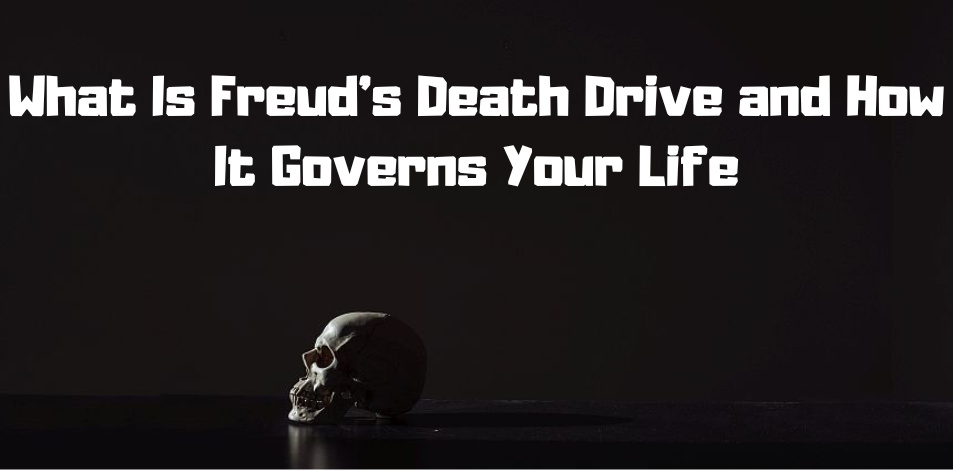
Are you the type of person who feels a little shudder or excitement when you hear about a major fatality? Don’t worry, you’re not a psychopath, but perhaps you’re just confirming Freud’s death wish.
The life instinct and the death drive according to Sigmund Freud
Sigmund Freud postulated that we all have two major opposing forces operating within our psyche; The life instinct (Eros) and the death drive (Thanatos). Eros draws us toward life, sex, pleasure, survival, creativity, and regrowth. Thanatos pulls us towards death and destruction. Which one dominates generally depends on our growing environment.
Freud based his theory on the main drives of sex and aggression that dominate our lives. Aggressive behavior was thought to represent a death drive. Freud stated that this death drive exists in all animals. We all have this universal desire to return to an inanimate state.
Now, this sounds a little like psychobabble. I mean, who really wants to die and return to an inanimate state? Well, the best way I can describe Freud’s death wish is to imagine that you are standing on top of a very tall building. You look to the side. The death drive is that compulsion to jump into the air. It’s that weird, weird feeling of being pulled to the brink of danger.
The death drive can affect individuals and groups of people. For example, those who engage in high-risk sports such as free climbing or skydiving on a regular basis. Anyone who puts their life in danger over and over again until they achieve their ultimate goal – death. There are also destructive behaviors such as smoking, heavy drinking, or drug use.
Roots of Freud’s theory
Freud was a doctor and worked with soldiers returning from World War I. The general consensus was that survivors of such terrible events would have renewed strength for life. In other words, their life instinct would kick in after witnessing such death and destruction on an industrial scale.
But Freud discovered that this is not the case. In fact, the majority of returning soldiers seemed to experience the opposite. These survivors seem forced to repeat their traumatic experiences in their dreams.
Freud believed that because these soldiers were unable to come to terms or comprehend their horrific experiences, they were driven to replay them in their minds. Freud believed they were trying to prepare themselves for the horrors to come. Of course, we now know that these soldiers were suffering from PTSD.
Freud’s death drive, self-destruction, and suicide
So why is all this important? You might think that Freud’s theory of Eros and Thanatos would relate to the way we die, but it’s not. It’s about how we live, how we go through life. Freud believed that we all go through a period of self-destruction. Some people have longer and more intense periods than others. When this drive is turned inward, it leads to suicide. If it turns outward, we act aggressively toward others.
This aggressive behavior is practiced in all walks of life, from politics to popular culture. Every day we hear about cyberbullying, animal cruelty, defaming political opponents, making fun of someone’s weight or appearance, and slut shaming.
Most of us direct this death drive outward, toward others. But some direct it to themselves. Those who do will use critical statements about themselves. Their inner voices belittle and denounce themselves. They have a voice that attacks themselves and constantly interrupts their thoughts. Furthermore, there is a link between self-destructive thoughts and suicide.
FAST is an abbreviation for the Firestone Assessment of Suicidal Ideation. It was developed by psychologist Richard Firestone to examine the possible relationship between self-destructive thoughts and suicide attempts.
Examples of self-destructive inner voices
A documentary charts the aftermath of suicide survivors. It focused on three survivors, Susan, Trish, and Kevin.
Susan describes the “malicious” voice that spoke to her directly before she attempted to end her life. These are examples of what it says:
“Who cares if you’re not there?”
“You thought you mattered, and now you don’t matter. It doesn’t matter… If you don’t matter, what does it matter? Nothing matters.”
“Why are you waking up?”
These are examples of Trish’s inner voice:
“Your family doesn’t love you.”
“You’re alone. You’ll die alone. You’ll always be alone.”
“The only thing you can do is go and kill yourself.”
Kevin remembers the things his inner voice said before he jumped off the Golden Gate Bridge:
“I am a burden to my family and friends.”
“I’m hurting them with this bipolar disorder, this annoying nuisance of a man.”
We already know that language is incredibly powerful in how it shapes our moods. In fact, there are big differences between the words used by an optimist and a pessimist. So, how can we become aware of our inner voices? That the words we use can change how we feel?




